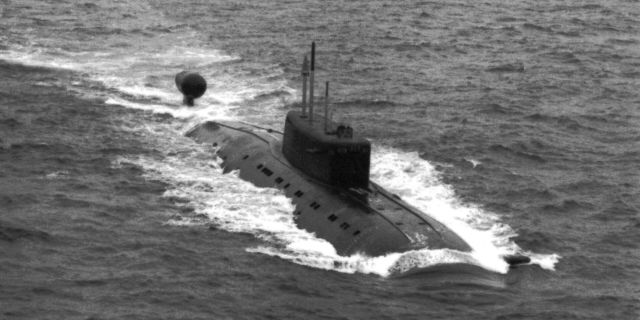The Russian submarine Project 945A of the Cold War is a mystery. What do we know about her?
The project 945A Condor submarines, built during the Cold War, are still in service, writes 19 Forty Five. The author of the article tells what is known about their technical characteristics, and notes that they will not be written off yet.
Wesley Culp
Russian submarines of Project 945A "Condor" (according to NATO classification: Sierra-II) were designed at the end of the Cold War, but are still in service. Despite their age, Moscow, apparently, intends to keep two ships of this class in operation in the foreseeable future.
Development of project 945A
Project 945A "Condor" is a further development of the nuclear attack submarines of Project 945 "Barracuda". The development of the original project 945 began in the 70s with an emphasis on the use of titanium for the manufacture of the case. Titanium is lighter and stronger than steel, which is traditionally used to make submarine hulls, but it is much more difficult to work with it on a large scale.
The only two representatives of this class, founded in 1986 and 1989, were named "Nizhny Novgorod" and "Pskov" in honor of major Russian cities. These two Condors differed from the original Barracuda with a large cockpit fairing and sonar, as well as an additional escape capsule. However, these changes in configuration resulted in a reduction in the size of the torpedo tubes.
What is a 945A?
Relatively little is known about the capabilities of the 945A project, since, unlike more modern analogues, they are not advertised as widely.
Commissioned in 1990 and 1993, Nizhny Novgorod and Pskov are equipped with six 530-mm launchers that can launch torpedoes and certain types of missiles, including cruise missiles. It is reported that both can detect enemy submarines thanks to the wake detection system (SOX) installed in the wheelhouse, which is a technological alternative to sonar. Powered by a 90-megawatt OK-650B reactor, the Condors are capable of speeds up to 35 knots underwater and up to 19 knots on the surface.
Modernization of project 945A
The commanders of the Russian fleet, apparently, expect that Nizhny Novgorod and Pskov will remain in service for a long time. By the mid-2000s, the leadership of the Navy concluded that most of the Russian nuclear submarine fleet, including the Condors, was subject to modernization. By 2008, the relevant proposals for projects 945 and 945A were received from the Central Design Bureau "Rubin". However, by 2015, the modernization process of both Condors faced serious budget problems and, apparently, lost priority compared to the heavy strategic missile submarines of Project 941 Akula (according to the NATO classification: Typhoon) and the Project 949 Granit and 949A Antey (according to the NATO classification: Oscar).
However, the Russian military leaders, apparently, considered that Nizhny Novgorod and Pskov would withstand at least one more deep modernization before the final write-off in the distant future. In the program "Military Inspection" on the TV channel "Zvezda" of the Russian Defense Ministry, the commander of the 7th Division of submarines of the Northern Fleet said that the durability of the project 945A will allow both boats to undergo several deep repairs to extend the service life in the fleet. What a striking contrast with the decision to write off "Dmitry Donskoy" — the last working sample of project 941 "Shark"!
So the Russian "Condors" will probably conquer the expanses of the open ocean for some time, unless serious difficulties or structural problems are found on them, because of which Moscow will lose faith in the durability of these still Soviet boats.
Wesley Culp is a researcher at the Center for the Study of the Presidency and Congress. He regularly writes about Russian and Eurasian politics and national security, is published in The Hill and Diplomatic Courier

